Thanks to all of you who participated in our 2020 Architecture Survey. Your participation is a critical contribution to ensuring that we maintain a proper focus on you, the community of users, and your evolving needs. It is important to understand that this survey is not a market survey, and does not represent all of the OpenNebula deployments worldwide.
This is the fifth architectural survey of OpenNebula since 2012, and we collected results between May 11th and May 29th of 2020. The data provided helps to highlight how OpenNebula is being used in the user community, as well as helping to indicate how things are developing toward the future.
Executive Summary
There are some interesting findings when comparing to our previous survey in 2018:
- The shift of “Number of Zones” and “Number of Nodes” toward the larger groupings in both cases helps to highlight a continually increasing stability and overall growth of OpenNebula cloud environments.
- OpenNebula usage falls within a general distribution of 80% usage by industry and commercial organizations and 20% by government, research and non-profit institutions.
- There is a slow but steady growth of utilization of other cloud providers by OpenNebula users. This falls in line with the ever-growing desire for flexibility and integration with all the cloud offerings. And consequently, OpenNebula’s “Elastic Private Cloud” is the perfect answer to being able to reap the benefits of other complementary technologies.
- Since the introduction of LXD support in v.5.8 “Edge”, we have seen a significant portion of the user population take advantage of the system container technology with OpenNebula. We expect that to continue on in the future.
- From an Operating System perspective both CentOS and Ubuntu remain heavy favorites, with Ubuntu growing significantly in popularity and utilization, and now leading the pack.
- Utilization of containers and tools for configuration and provisioning are here to stay, with a broadening use within OpenNebula environments.
Thank you again for participating in our survey!
Detailed Results
The Industry demographics of OpenNebula usage has remained fairly steady, with a slight increase of usage across most of the “commercial industries”, bringing a total of commercial use to just over 80%. Usage by Government, Non-profit, and Research and Academic groups has occupied a slightly smaller percentage of the user base over time.
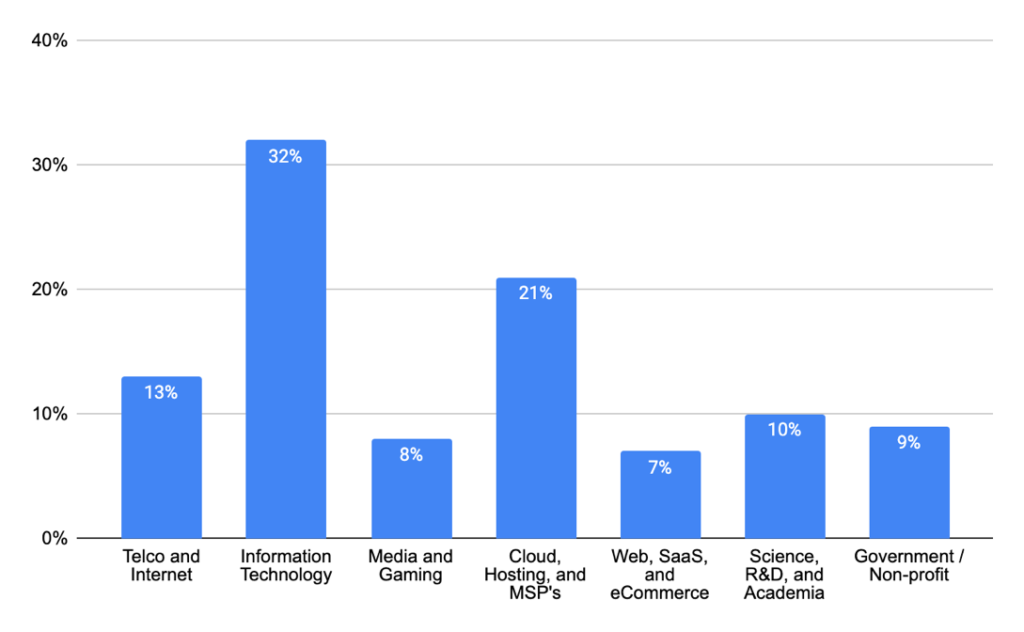
Usage by larger companies is steadily increasing, now reaching 23% of companies with 5,000 employees or more, compared to 20% from 2018. With smaller companies – (of 500 employees or less) – remaining a key demographic for OpenNebula usage, they constitute a slowly reducing base of 54%, compared to 58% from our last survey.
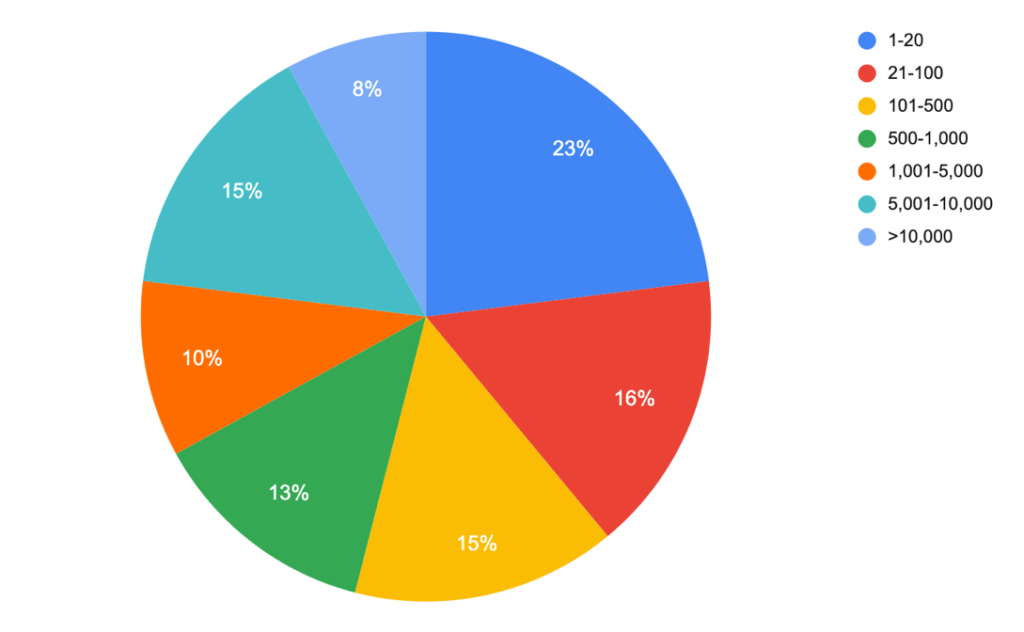
Taking a look at some of the other cloud provider technologies that OpenNebula users are using, Amazon Web Services continues to be most popular (56%), however usage of Microsoft Azure (46%) has grown since 2018.
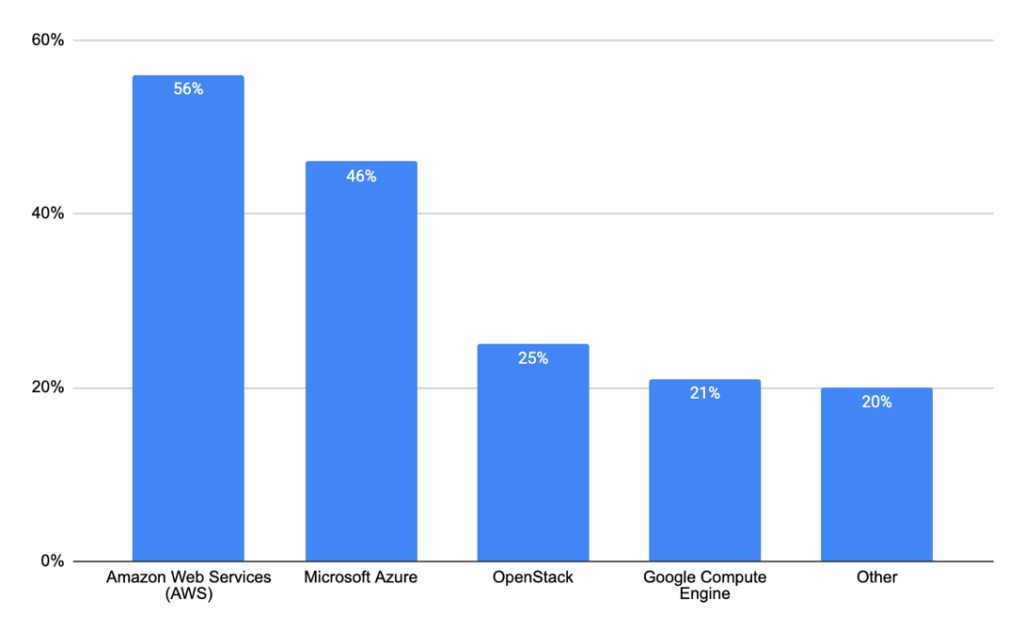
62% of OpenNebula users have more than a single cloud zone. And users with 5 zones or more have jumped to 34%, from 24% in 2018.
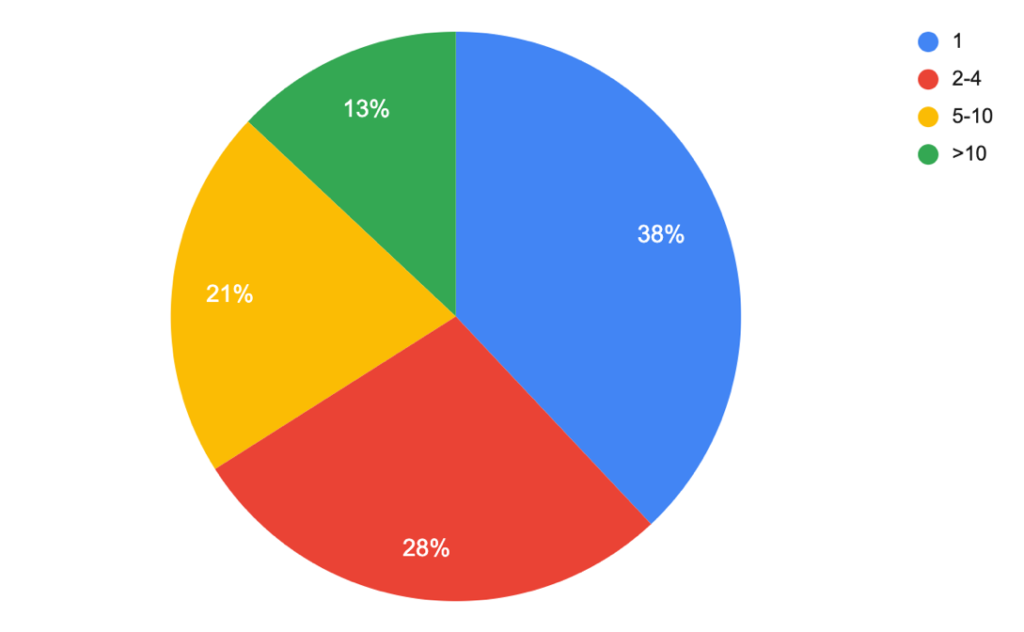
Node count, with some slight shifts both up and down across groupings – has remained more-or-less steady. We see that 75% of OpenNebula users have more than 10 nodes, down slightly from 77% in 2018. Implementations with at least 50 nodes account for 43% of user-collected figures, compared to 41% in 2018.
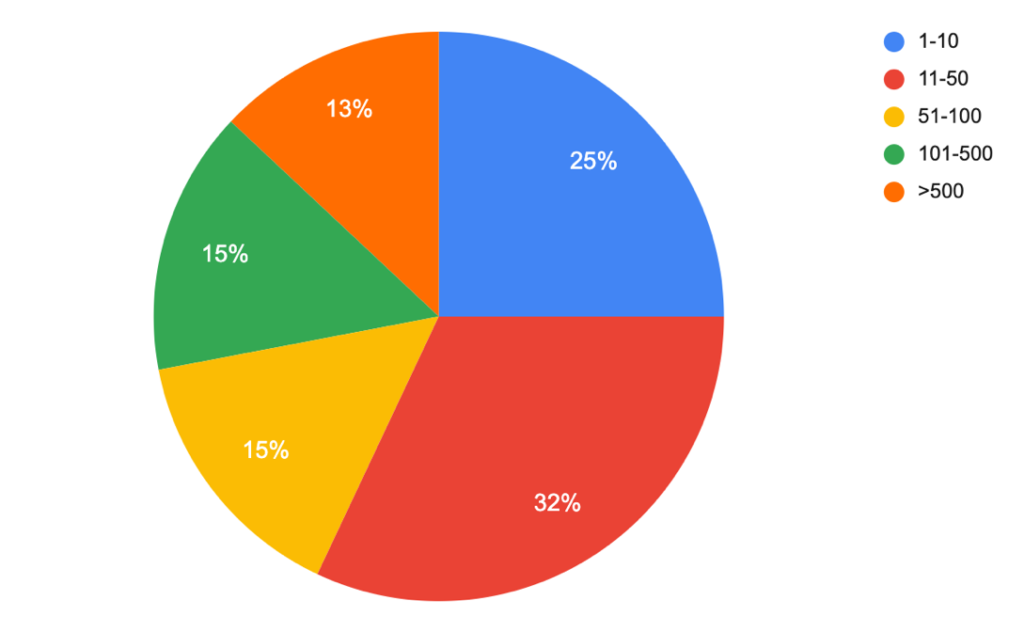
CPU architecture is a new detail about which we collected info this year, and it is plain to see that Intel x64 is the processor of choice, though AMD x64 is used by a quarter of the respondents, and there is some ARM usage, as well.
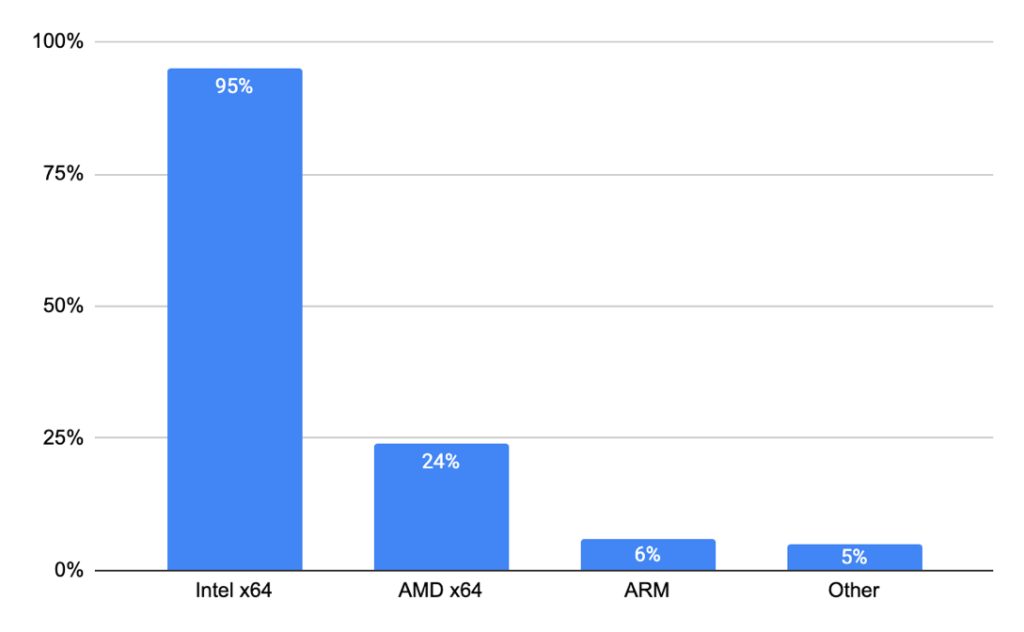
Ubuntu and CentOS still remain the most popular Linux distributions for creating OpenNebula clouds with usage at 55% and 49% respectively, with Ubuntu gaining popularity over CentOS since 2018. Debian has remained steady at 21% usage.
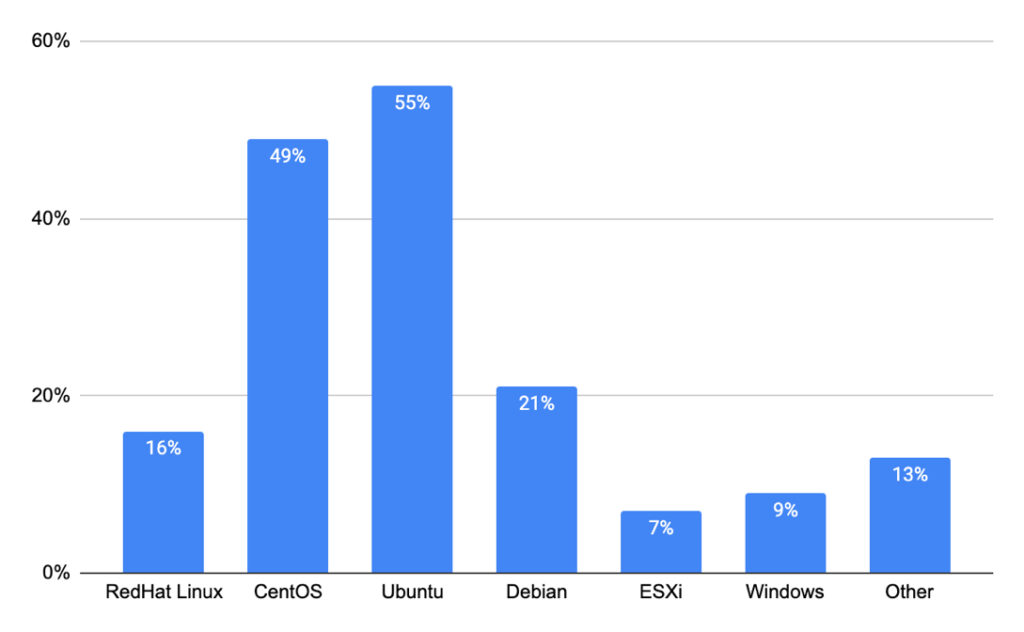
KVM hypervisors remain the most commonly used hypervisors in OpenNebula environments. And the VMware hypervisor continues to be a very solid use-case for OpenNebula users. The percentage of KVM users has remained steady, at 75% . VMware hypervisors increased slightly to 42% compared to 39% in 2018, and with the recent integration for LXD, we see a usage percentage of 19%.
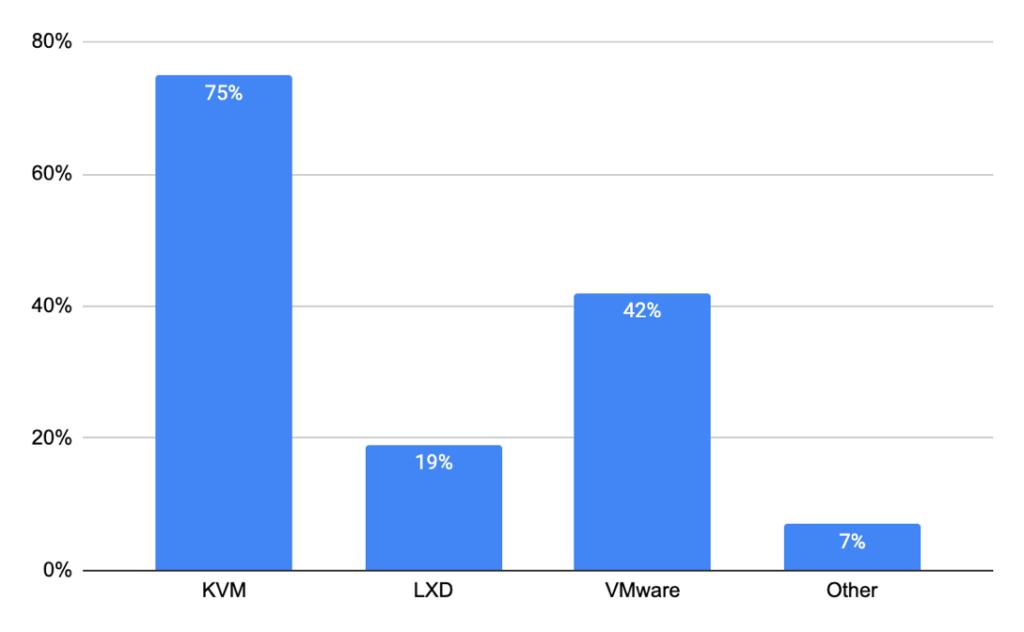
While we collected data for several storage configurations, the Shared datastores at 55% and Ceph at 38% remain the most widely used storage solutions in open environments.
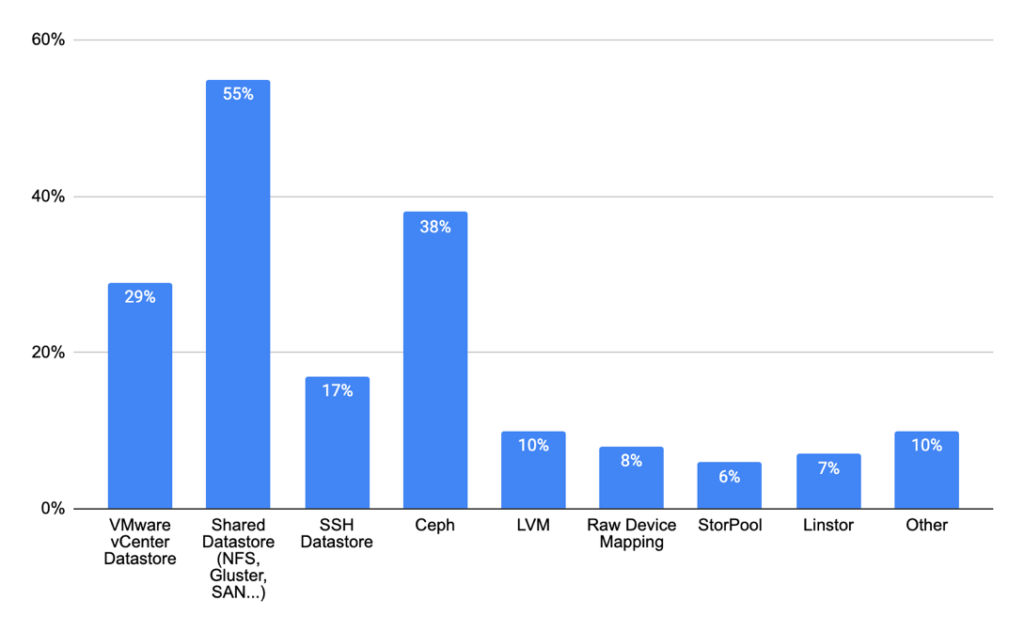
802.1Q VLAN networks have shown a significant bump in usage with 52%, jumping from 31% in 2018, and now taking top spot. Standard Bridged Network configurations keep a steady 41% usage, from 40% in 2018.
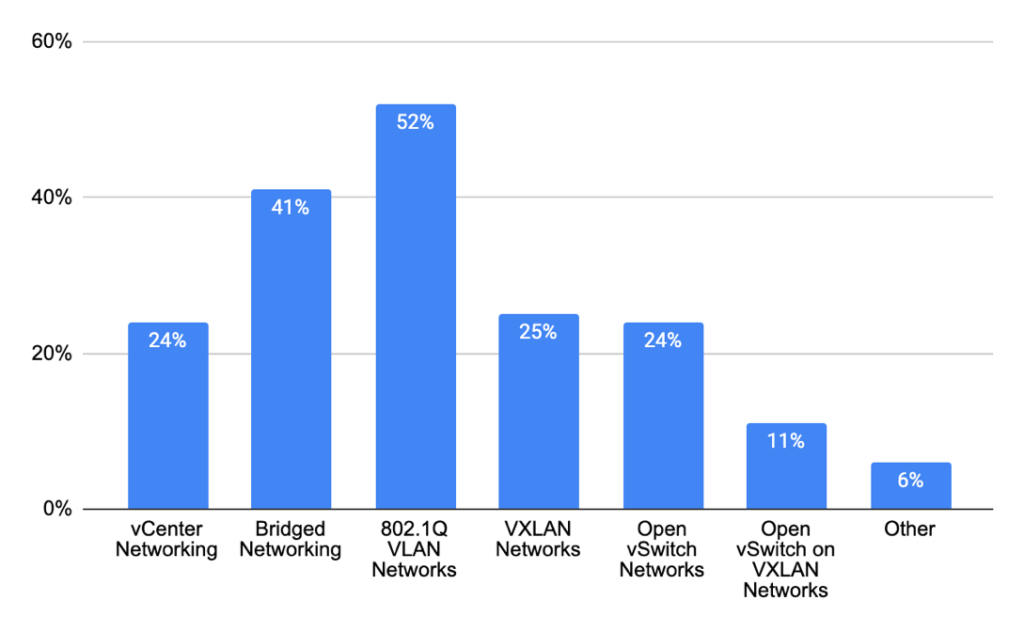
The utilization of tools for Cloud, Configuration and Infrastructure Management are steadily growing and becoming necessary components for Developers and DevOps teams. We see a 63% usage of Configuration Management tools, and a 45% usage of containers.
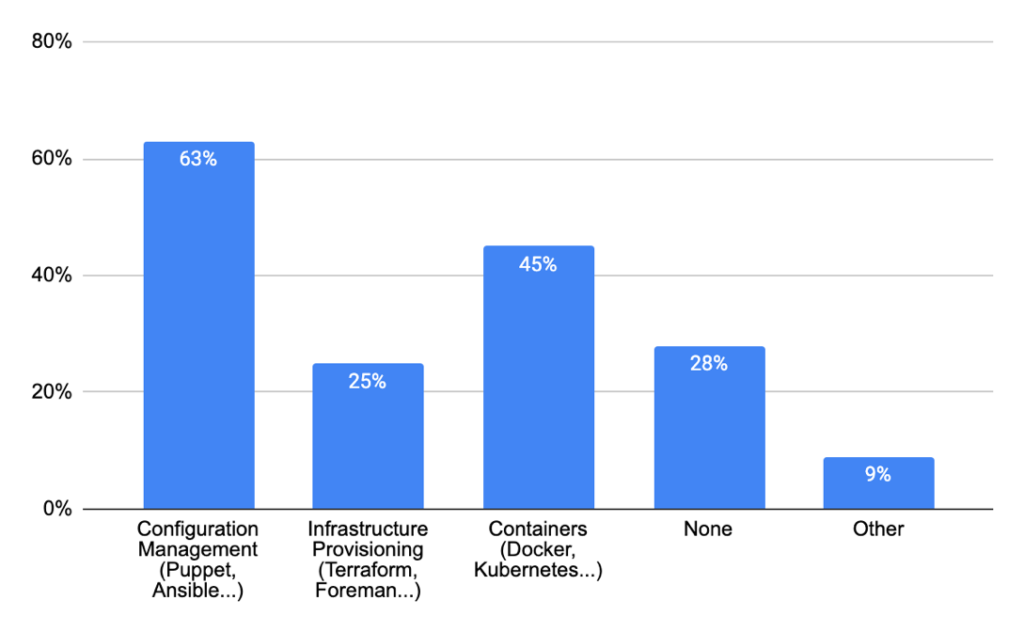
In terms of Application Management, the utilization of containers and PaaS tools are key components of the Developer’s toolbox. Kubernetes, is by far, the most popular container technology with a 47% usage. Other container technologies are steadily finding their way in OpenNebula environments.
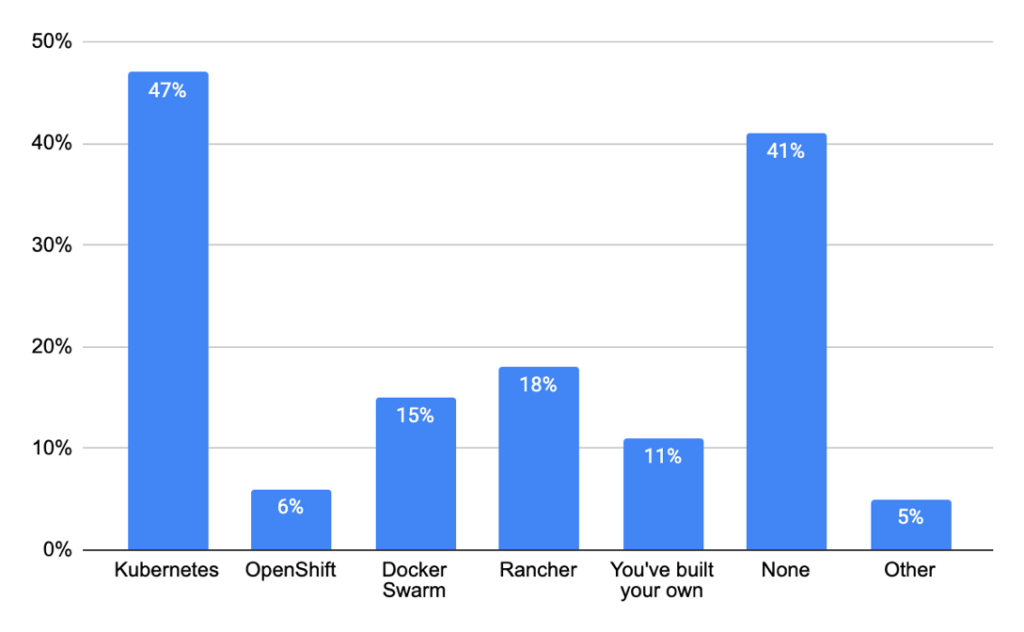
A very large constituent of users continues to choose Python bindings (56%) within their OpenNebula environments, up from 45% in 2018. Of the other API’s currently available, the Go Binding usage has made a significant jump to 28% from 13% in 2018, while JAVA and Ruby have remained fairly steady at 18% and 24% respectively. And 31% of users state no current interest in using OpenNebula API’s.
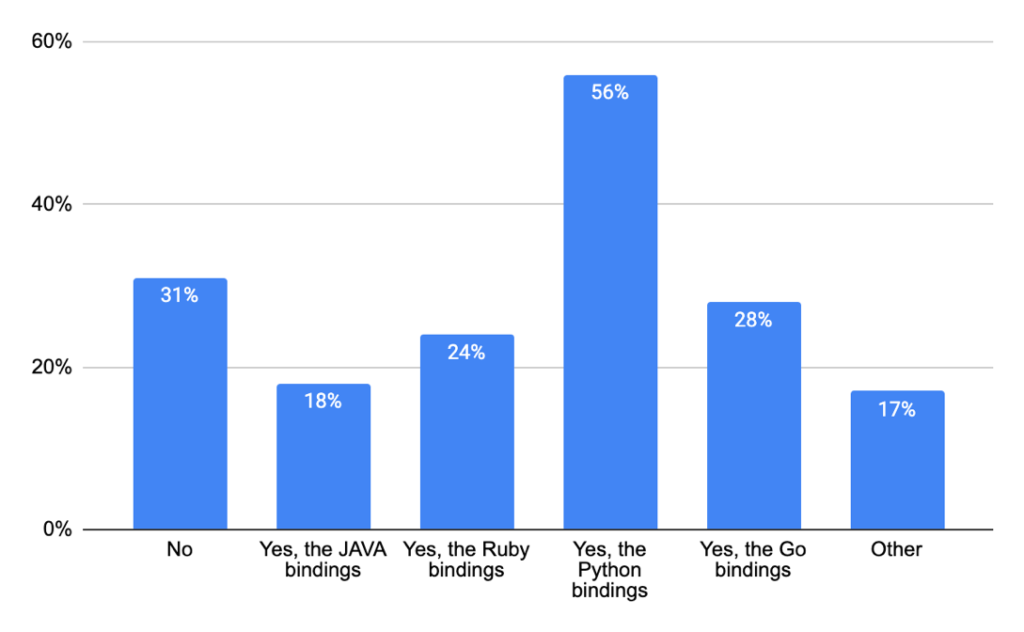
Below we get a quick look as some of the features of OpenNebula that are either being used or which users are intending to use in the imminent future. With the wide flexibility provided by OpenNebula it is easy to see that users have the choice to figure out how it best suits each of their needs.
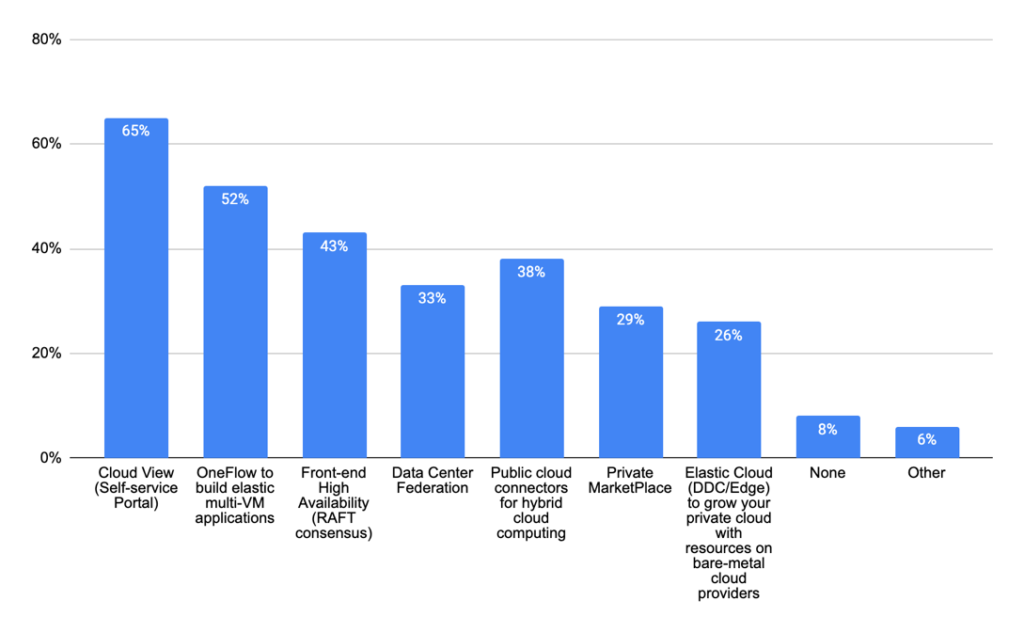
A big thank you again for your participation in this Architecture Survey. Your collaboration keeps the OpenNebula project moving onwards and upwards! 🚀




0 Comments